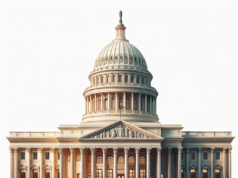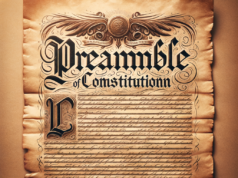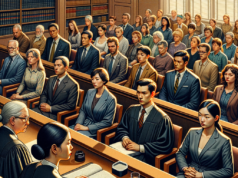Contents
- 1 Understanding the Scope: An Overview of Stolen Firearms in America
- 2 The Statistics Speak: Analyzing Recent Trends in Firearm Theft Rates
- 3 The Impact of Stolen Firearms on Crime and Public Safety
- 4 Factors Contributing to the Surge in Firearm Theft Across the Nation
- 5 Policy Responses: What Lawmakers Are Doing to Combat Firearm Theft
- 6 Community Engagement: How Citizens Can Help Address the Crisis
In recent years, the United States has witnessed a troubling surge in the number of stolen firearms, raising significant concerns about public safety and crime rates. As gun ownership continues to be a contentious issue in American society, the alarming rise in firearm thefts has sparked debates among lawmakers, law enforcement agencies, and community leaders. This article delves into the scope of the crisis, analyzes recent trends, examines its impact on crime, explores contributing factors, reviews policy responses, and highlights the role of community engagement in addressing this pressing issue.
Understanding the Scope: An Overview of Stolen Firearms in America
The issue of stolen firearms in America has reached alarming proportions, with thousands of guns reported stolen each year. According to the Bureau of Alcohol, Tobacco, Firearms and Explosives (ATF), an estimated 300,000 firearms are stolen annually, a figure that has been steadily increasing over the past decade. This trend poses significant risks not only to the individuals whose firearms are stolen but also to the broader community. Stolen firearms often end up in the hands of criminals, contributing to a cycle of violence and illegal activity that undermines public safety. The challenge is further compounded by the lack of comprehensive tracking systems, making it difficult to ascertain the full extent of the problem and its implications for society.
The Statistics Speak: Analyzing Recent Trends in Firearm Theft Rates
Recent statistics reveal a disturbing upward trajectory in firearm theft rates across the United States. The National Crime Information Center (NCIC) reported a 30% increase in firearm thefts from 2019 to 2021, with urban areas experiencing the most significant spikes. Cities like Chicago, Los Angeles, and New York have reported thousands of firearms stolen from vehicles, homes, and gun shops. Moreover, the COVID-19 pandemic has exacerbated the situation, as many individuals purchased firearms for personal safety, leading to an increase in thefts from homes and vehicles where these guns were stored. The data underscores the urgent need for effective measures to combat this growing crisis.
The Impact of Stolen Firearms on Crime and Public Safety
The proliferation of stolen firearms has far-reaching implications for crime and public safety. Studies have shown that a significant percentage of firearms used in crimes were originally stolen, with estimates suggesting that nearly 60% of guns recovered from crime scenes were taken from lawful owners. This connection between stolen firearms and criminal activity raises serious concerns about the effectiveness of current gun control measures. Furthermore, the presence of stolen firearms in communities can lead to increased gun violence, gang activity, and a general sense of insecurity among residents. The ripple effects of this crisis extend beyond immediate crime rates, affecting community cohesion and trust in law enforcement.
Factors Contributing to the Surge in Firearm Theft Across the Nation
Several factors have contributed to the alarming rise in firearm thefts across the nation. One of the primary drivers is the increasing number of firearms in circulation, as more Americans purchase guns for self-defense and recreational purposes. This surge in ownership has created more opportunities for theft, particularly in cases where firearms are left unsecured in vehicles or homes. Additionally, the rise of organized crime and gang activity has fueled demand for illegal firearms, leading to targeted thefts from gun shops and private collections. The lack of stringent security measures and tracking systems for firearms further exacerbates the problem, making it easier for criminals to acquire weapons without detection.
Policy Responses: What Lawmakers Are Doing to Combat Firearm Theft
In response to the growing crisis of stolen firearms, lawmakers at both the federal and state levels have begun to implement various policy measures aimed at curbing firearm theft. Some states have introduced legislation requiring gun owners to secure their firearms in locked containers or safes, while others have proposed stricter penalties for individuals found in possession of stolen firearms. Additionally, there have been calls for enhanced collaboration between law enforcement agencies and gun retailers to improve tracking and reporting of stolen firearms. While these measures represent a step in the right direction, advocates argue that more comprehensive federal legislation is needed to address the issue on a national scale.
Community Engagement: How Citizens Can Help Address the Crisis
Addressing the crisis of stolen firearms requires active participation from citizens at the community level. Individuals can play a crucial role by taking proactive steps to secure their firearms, such as investing in gun safes, using trigger locks, and being vigilant about where they store their weapons. Community awareness campaigns can also help educate gun owners about the importance of responsible firearm storage and the potential consequences of theft. Furthermore, citizens can engage with local law enforcement to report suspicious activities and participate in neighborhood watch programs aimed at reducing crime. By fostering a culture of responsibility and vigilance, communities can collectively work towards mitigating the impact of stolen firearms and enhancing public safety.
The alarming rise of stolen firearms in America presents a multifaceted challenge that requires a concerted effort from lawmakers, law enforcement, and citizens alike. As the statistics reveal a troubling trend, it is imperative that communities come together to address the root causes of firearm theft and its implications for public safety. Through effective policy responses and active community engagement, there is hope for reversing this crisis and fostering a safer environment for all Americans. The time to act is now, as the consequences of inaction could reverberate through our communities for years to come.

























